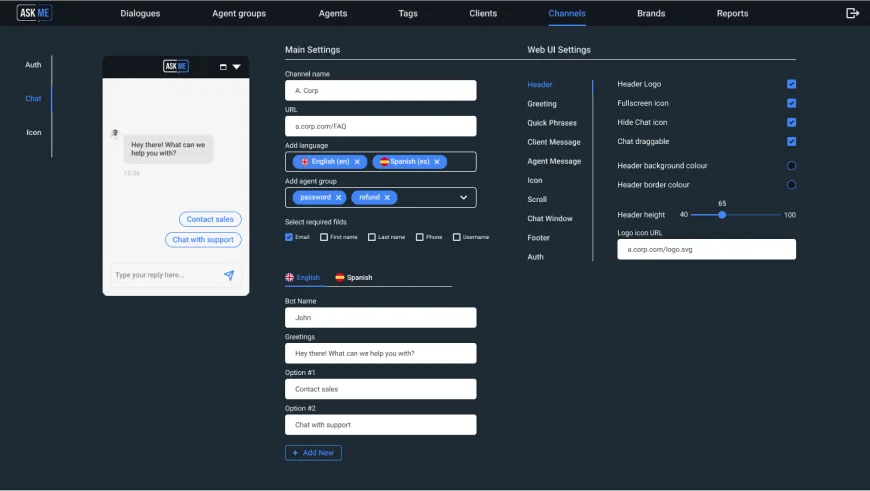Common tasks include parsing, speech recognition, part-of-speech tagging, and information extraction. Hence the breadth and depth of “understanding” aimed at by a system determine both the complexity of the system (and the implied challenges) https://www.globalcloudteam.com/ and the types of applications it can deal with. The “breadth” of a system is measured by the sizes of its vocabulary and grammar. The “depth” is measured by the degree to which its understanding approximates that of a fluent native speaker.
For example, Wayne Ratliff originally developed the Vulcan program with an English-like syntax to mimic the English speaking computer in Star Trek. Accurately translating text or speech from one language to another is one of the toughest challenges of natural language processing and natural language understanding. NLU is a task within the broader field of natural language processing, or NLP, that focuses on processing an individual phrase or sentenct to extract its intent and any slots containing information necessary to fulfill that intent.
Natural Language Understanding
By employing expert.ai Answers, businesses provide meticulous, relevant answers to customer requests on first contact. Our open source conversational AI platform includes NLU, and you can customize your pipeline in a modular way to extend the built-in functionality of Rasa’s NLU models. You can learn more about custom NLU components in the developer documentation, https://www.globalcloudteam.com/how-to-train-nlu-models-trained-natural-language-understanding-model/ and be sure to check out this detailed tutorial. Natural language processing is a subset of AI, and it involves programming computers to process massive volumes of language data. It involves numerous tasks that break down natural language into smaller elements in order to understand the relationships between those elements and how they work together.
The good news is that once you start sharing your assistant with testers and users, you can start collecting these conversations and converting them to training data. Rasa X is the tool we built for this purpose, and it also includes other features that support NLU data best practices, like version control and testing. The term for this method of growing your data set and improving your assistant based on real data is called conversation-driven development (CDD); you can learn more here and here. Conversational interfaces are powered primarily by natural language processing (NLP), and a key subset of NLP is natural language understanding (NLU).
Creating an NLU model
It’s important to add new data in the right way to make sure these changes are helping, and not hurting. To train a model, you need to define or upload at least two intents and at least five utterances per intent. To ensure an even better prediction accuracy, enter or upload ten or more utterances per intent. Whether it’s simple chatbots or sophisticated AI assistants, NLP is an integral part of the conversational app building process. And the difference between NLP and NLU is important to remember when building a conversational app because it impacts how well the app interprets what was said and meant by users.
Learn how to extract and classify text from unstructured data with MonkeyLearn’s no-code, low-code text analysis tools. With natural language processing and machine learning working behind the scenes, all you need to focus on is using the tools and helping them to improve their natural language understanding. In the example below, the custom component class name is set as SentimentAnalyzer and the actual name of the component is sentiment. In order to enable the dialogue management model to access the details of this component and use it to drive the conversation based on the user’s mood, the sentiment analysis results will be saved as entities.
When possible, use predefined entities
In other words, the primary focus of an initial system built with artificial training data should not be accuracy per se, since there is no good way to measure accuracy without usage data. Instead, the primary focus should be the speed of getting a “good enough” NLU system into production, so that real accuracy testing on logged usage data can happen as quickly as possible. Obviously the notion of “good enough”, that is, meeting minimum quality standards such as happy path coverage tests, is also critical.

This data could come in various forms, such as customer reviews, email conversations, social media posts, or any content involving natural language. The purpose of this article is to explore the new way to use Rasa NLU for intent classification and named-entity recognition. Since version 1.0.0, both Rasa NLU and Rasa Core have been merged into a single framework. As a results, there are some minor changes to the training process and the functionality available.
Create a GPT Slackbot with Replit to search your internal docs
The basic process for creating artificial training data is documented at Add samples. Otherwise, if the new NLU model is for a new application for which no usage data exists, then artificial data will need to be generated to train the initial model. This document describes best practices for creating high-quality NLU models. This document is not meant to provide details about how to create an NLU model using Mix.nlu, since this process is already documented.

These research efforts usually produce comprehensive NLU models, often referred to as NLUs. When analyzing NLU results, don’t cherry pick individual failing utterances from your validation sets (you can’t look at any utterances from your test sets, so there should be no opportunity for cherry picking). No NLU model is perfect, so it will always be possible to find individual utterances for which the model predicts the wrong interpretation. However, individual failing utterances are not statistically significant, and therefore can’t be used to draw (negative) conclusions about the overall accuracy of the model. Overall accuracy must always be judged on entire test sets that are constructed according to best practices.
How to train NLU models: A step-by-step guide
This section provides best practices around selecting training data from usage data. The end users of an NLU model don’t know what the model can and can’t understand, so they will sometimes say things that the model isn’t designed to understand. For this reason, NLU models should typically include an out-of-domain intent that is designed to catch utterances that it can’t handle properly. This intent can be called something like OUT_OF_DOMAIN, and it should be trained on a variety of utterances that the system is expected to encounter but cannot otherwise handle. Then at runtime, when the OUT_OF_DOMAIN intent is returned, the system can accurately reply with “I don’t know how to do that”.
- This intent can be called something like OUT_OF_DOMAIN, and it should be trained on a variety of utterances that the system is expected to encounter but cannot otherwise handle.
- Overall accuracy must always be judged on entire test sets that are constructed according to best practices.
- The very general NLUs are designed to be fine-tuned, where the creator of the conversational assistant passes in specific tasks and phrases to the general NLU to make it better for their purpose.
- But, cliches exist for a reason, and getting your data right is the most impactful thing you can do as a chatbot developer.
If you’ve inherited a particularly messy data set, it may be better to start from scratch. But if things aren’t quite so dire, you can start by removing training examples that don’t make sense and then building up new examples based on what you see in real life. Then, assess your data based on the best practices listed below to start getting your data back into healthy shape.
SentiOne Automate – The Easiest Way to Training NLU
At the narrowest and shallowest, English-like command interpreters require minimal complexity, but have a small range of applications. Narrow but deep systems explore and model mechanisms of understanding,[24] but they still have limited application. Systems that are both very broad and very deep are beyond the current state of the art.
 MataRakyatNews.com Informasi Berita Daerah Terbaru
MataRakyatNews.com Informasi Berita Daerah Terbaru